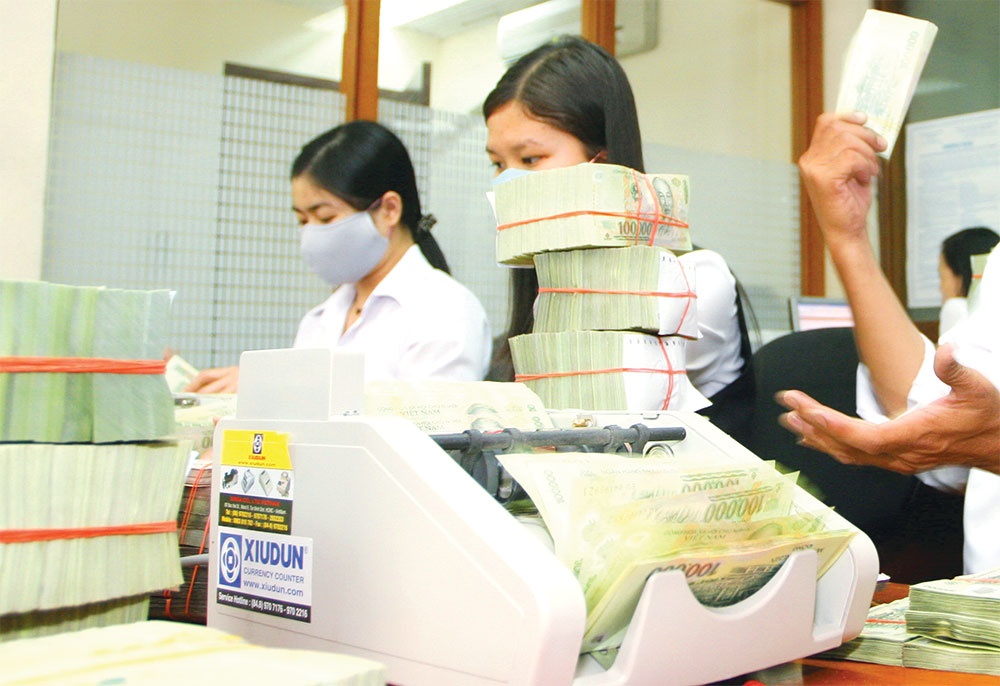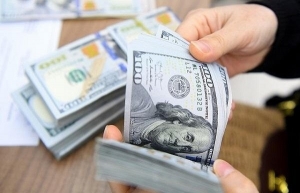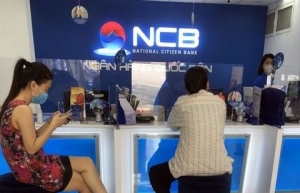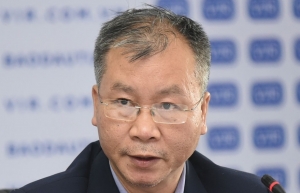Lenders contend with interest rates
The State Bank of Vietnam’s (SBV) data last month showed that by August 26, credit in the economy rose by 9.9 per cent compared to the beginning of the year, although the growth in capital mobilisation reached its lowest level in recent years, at 3.8 per cent.
 |
| The global situation is affecting Vietnam’s interest rates, photo Le Toan |
Nguyen Thanh Tung, deputy general manager of Vietcombank’s Executive Board, said, “The market is appealing in regards to capital mobilisation, causing numerous financial institutions to raise deposit rates to very high levels. The interest rate distinction can sometimes reach 1 per cent based on the terms.”
There is pressure on interest rates in a market where financial institutions, corporates, and residential transactions are steadily expanding. The stated capital mobilisation interest rate level rose from 0.3 to 0.9 per cent at multiple commercial banks, with an adjustment range of 20-40 basis points. The 12-month stated deposit interest rate for institutional clients has risen by 40 to 140 basis points compared to the end of 2021 and may go much higher.
The SBV has increased credit lines for a number of commercial banks with a distributed range of 0.7 to 4 per cent, and credit growth of the whole system is anticipated to expand by around 2 per cent.
Economist Le Xuan Nghia said that with the amended credit room ratio, the total credit balance is expected to be about 13.6 per cent, within the annual cap of 14 per cent for 2022. “Market interest rates have increased quickly due to high capital demand. Commercial banks also have a large number of incomplete credit contracts,” Nghia said. “However, the SBV has been extremely cautious regarding the money supply and credit space to avoid inflation.”
According to VNDS Research, 15 commercial banks have been permitted to increase their foreign ownership limits in recent years, representing almost 80 per cent of the industry’s existing loans. With a credit growth rate of 1-4 per cent, it is predicted that $11.8 billion was spent by the end of August.
The SBV has consistently used flexible open market operations to control market liquidity. In August, the bank issued around $68 billion, allowing almost $4 billion in treasury bills to expire. About $1.5 billion was auctioned in the same month, in conjunction with over $3.1 billion through a sell-buy contract.
It is projected that the SBV sold well over $3 billion in August, indirectly draining this sum from the system. Consequently, it has net withdrawn over $3.2 billion through bills and sales, contracts-purchase, and selling USD.
In August, the interbank rate varied owing to unstable banking system liquidity caused by the SBV’s actions. Liquidity continues to be under significant strain, largely stemming from the expiry of agreements to sell USD, which led to the withdrawal of cash from the system and a rise in the interbank interest rate. In the same month, interbank interest rates sometimes surpassed 7.5 per cent, the highest level since 2012.
Accordingly, the SBV supported the market with front purchasing, with an overall amount of more than $2.7 billion and the flexibility to extend the trading period to 14 days. Likewise, the bank continued to employ interest rate bidding, and open-market interest rates ranged between 4.5 per cent for a 7-day term to 4.65 per cent for a 14-day term, which helped to reduce interbank rates.
A leader of BIDV told VIR, “Pressures are increasing from the global environment, especially the upward trend of the domestic exchange rate. The SBV’s policy has also moved toward tightening,” he said.
He said that VND liquidity was still relatively weak and had deteriorated towards the end of August as cash flow continued to be lured to the SBV through selling treasury notes and foreign currency. In particular, the capital mobilisation-credit balance continues to be under pressure from a significant contraction of capital mobilisation growth that is encountering several obstacles.
“The SBV will likely continue to maintain a restrictive monetary policy despite global pressure, and the currency rate has not tended to ease. This is also an element that will continue to pressure the VND interest rate to annually rise by 0.2 to 0.3 per cent,” the BIDV leader said.
 | SBV raises selling price of USD to 23,700 VND The State Bank of Vietnam (SBV) decided to sharply increase the selling price of the US dollar by 300 VND to 23,700 VND/USD on September 7. |
 | SBV adjusts credit growth targets for banks The State Bank of Vietnam (SBV) has announced adjustments to credit growth targets for banks in 2022. |
 | Myriad of choices available for monetary policy in Vietnam amid global fluctuations As today’s markets are undoubtedly volatile, the State Bank of Vietnam is in a dilemma to adopt a proper monetary policy. Economic expert Vu Dinh Anh discussed with VIR’s Hong Dung the potential approaches for Vietnam to sail through the challenging period. |
What the stars mean:
★ Poor ★ ★ Promising ★★★ Good ★★★★ Very good ★★★★★ Exceptional
Related Contents
Latest News
More News
- Tax sector wraps up 2025 and sets priorities for next year (December 25, 2025 | 14:00)
- A tipping point for digital and hybrid wealth management in Vietnam (December 23, 2025 | 13:33)
- $250 million deal targets women-owned SMEs, sustainable agriculture (December 22, 2025 | 17:40)
- Stock market posts resilient 2025 performance (December 19, 2025 | 18:17)
- Citi Vietnam receives 2025 AmCham CSR recognition (December 19, 2025 | 16:35)
- As global green supply chain reshapes, will Vietnam be left behind? (December 19, 2025 | 08:00)
- Banks gear up for massive capital increases (December 18, 2025 | 17:04)
- Securing capital and efficiency for Vietnam’s 2026-2030 growth ambitions (December 17, 2025 | 10:00)
- Energy sector in need of blended finance mechanisms (December 17, 2025 | 09:00)
- Vietnam still has room to mobilise capital for sustainable growth (December 17, 2025 | 08:57)

 Tag:
Tag:





















 Mobile Version
Mobile Version